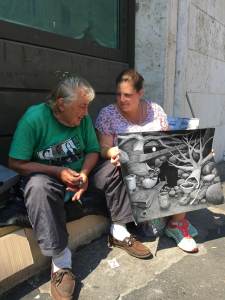I was an accountant, I am an RN, I was a doctor, I am a CNA, I was a car sales rep, I am a factory line worker, I was a security officer, I am a cook, I was a teacher, I am a cashier, I was an apartment complex manager, I am a waiter, I was a taxi driver, I was a LPN, I was a legal partner…
This is who “they” are. This is who makes us our homeless population. They are not so different from you and I. Most the them held “respectable” full time jobs. Many hold degrees.
Many of us are living our lives paycheck to paycheck. I am one of them. Many of us are forced to “rob Peter to pay Paul”. In the blink of an eye, any of us could end up in a car accident that leaves us disabled, out of work and stuck with medical debt. An unexpected divorce or death of the family breadwinner. Many of us are more susceptible than others to addiction causing us to falter in our game plans. Or on the other hand, our loves ones become addicted and we lose everything we have trying to “save” them.
These are our friends, family members, neighbors, and co-workers. They were the valedictorians of our classes, the star athletes and the leads of our school plays. In fact, a number of you on my Facebook have been, almost were are currently are homeless. I want those of you reading this to think about THAT…we share many mutual friends.
Remember this as you are driving and walking past them. They are humans too. They deserve respect, love and recognition. Hold your judgement. Share a handshake and smile. Be polite. Take a stand and lend a helping hand.
~ Laura LaCroix, RN, LVHN Street Medicine


